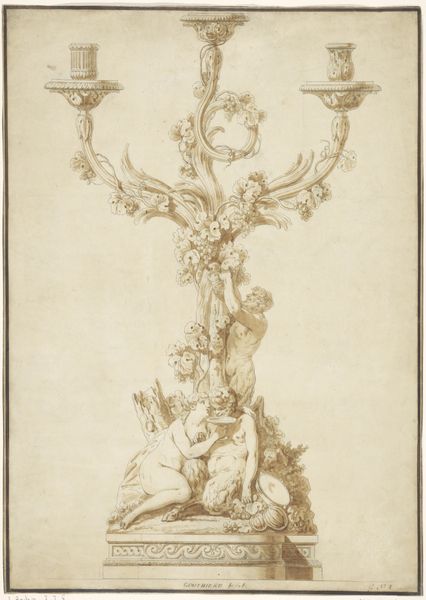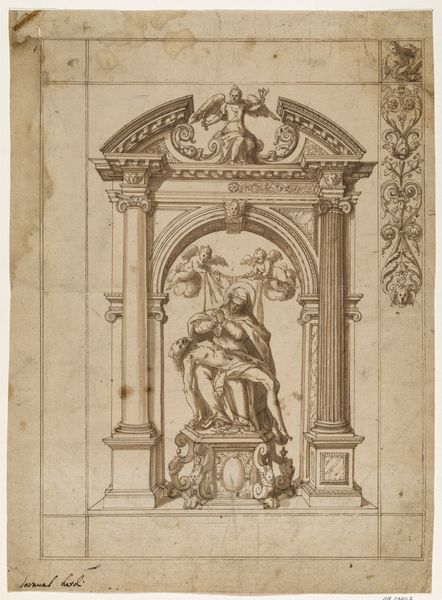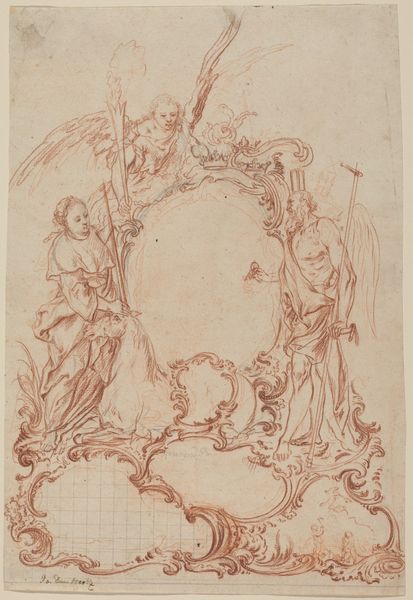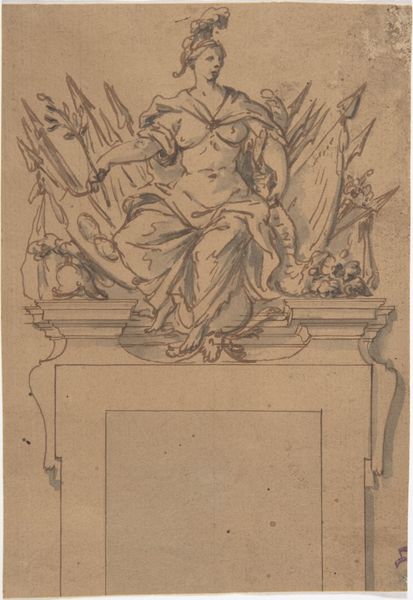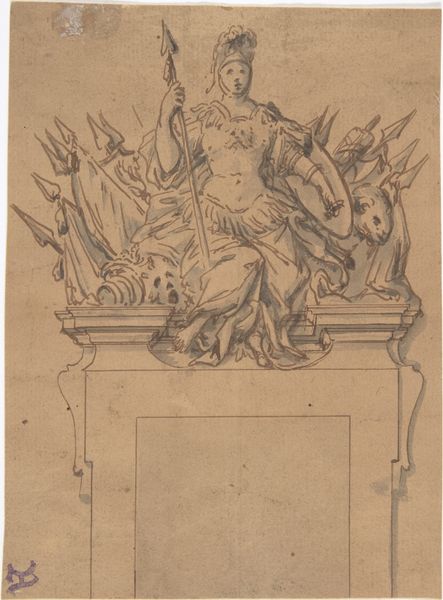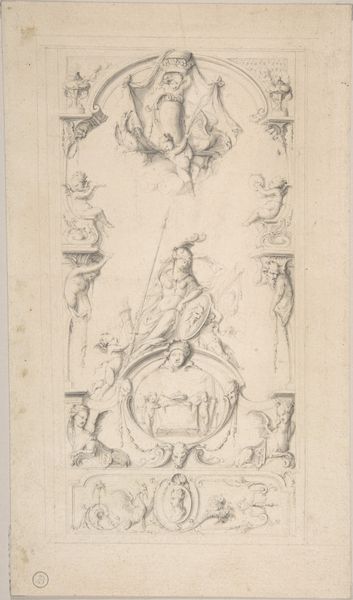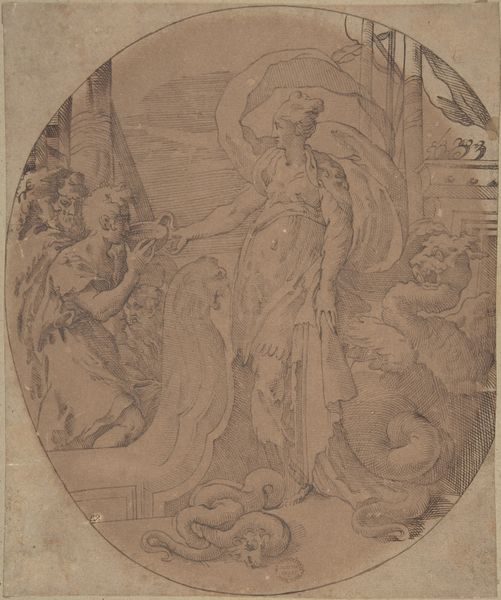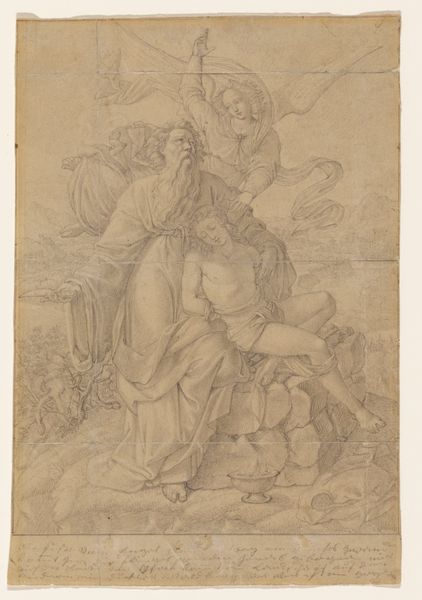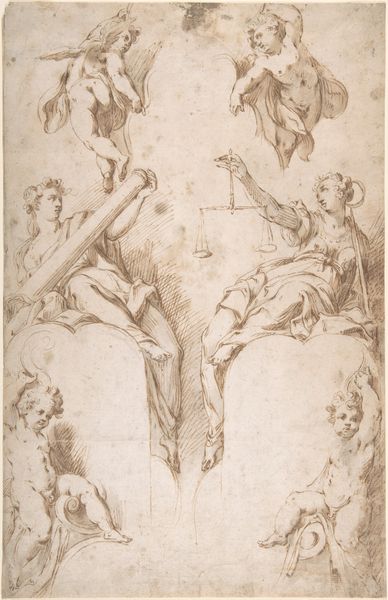
drawing, print, pencil
#
drawing
# print
#
figuration
#
11_renaissance
#
pencil
#
decorative-art
Dimensions: Sheet: 19 in. × 12 1/4 in. (48.3 × 31.1 cm)
Copyright: Public Domain
Curator: At first glance, there's an almost playful innocence to this candelabra design, don't you think? Like putti mischievously holding up branches that just happen to have candleholders on them. Editor: Mischievous, yes, but I also see meticulous labor. This design for a candelabra, dating from about 1760 to 1770, probably intended as a print, gives me a strong sense of process—all those fine pencil strokes creating an illusion of weight and texture, specifically bronze or maybe silver. It reveals so much about period craftsmanship and aspiration. Curator: Absolutely. You feel the craftsman's touch in every line. But it's also the imaginative leap – transforming functional objects into miniature allegories of lightness, aspiration—literally, light being lifted upwards by these little figures. It's as if the light itself is being offered. Editor: Offered, yes, but consider the social context too. These sorts of luxury objects were for the elite, the patrons. The design isn’t just whimsical; it’s tied to systems of production, and of course, consumption. I bet the actual making of one of these candelabras took a team of artisans—founders, finishers, polishers... Layers of skilled work that is quite difficult to appreciate here. Curator: That's a sharp perspective, and a critical addition. Though looking at it now, beyond the luxury aspect, beyond the possible social divide, it kind of evokes a dream, a shared longing for beauty. What kind of candlelight stories this piece could cast—even now, if you found it in a dusty attic or illuminated a modern feast? Editor: Indeed. Though thinking materially, imagine the mold-making, the casting process—the repetitive labor that underpinned this singular drawing we now admire at the Metropolitan Museum of Art. Someone had to refine that base, maybe in marble. Even luxury has humble beginnings. Curator: Yes, art is inherently, inescapably tied to process and material. Yet that also opens it up for fresh reflection, doesn't it? Like revisiting this candelabra design: part history, part fancy—and ultimately, I hope, a light of wonder. Editor: I'd say revisiting highlights the means, more than the wonder, as we move toward understanding art through materiality, class, and the sweat equity it stands upon, whether gilded or grounded in marble dust.
Comments
No comments
Be the first to comment and join the conversation on the ultimate creative platform.
